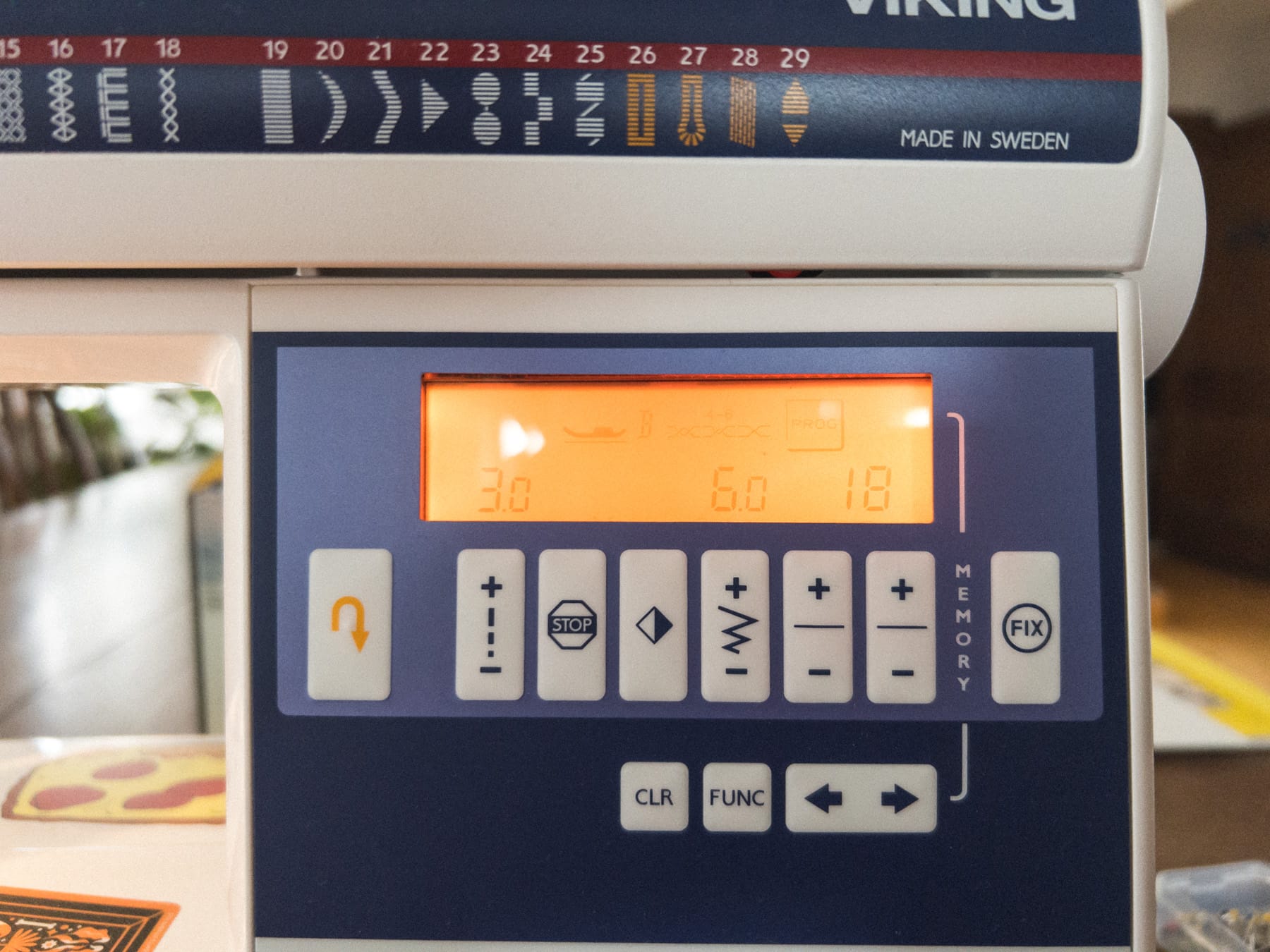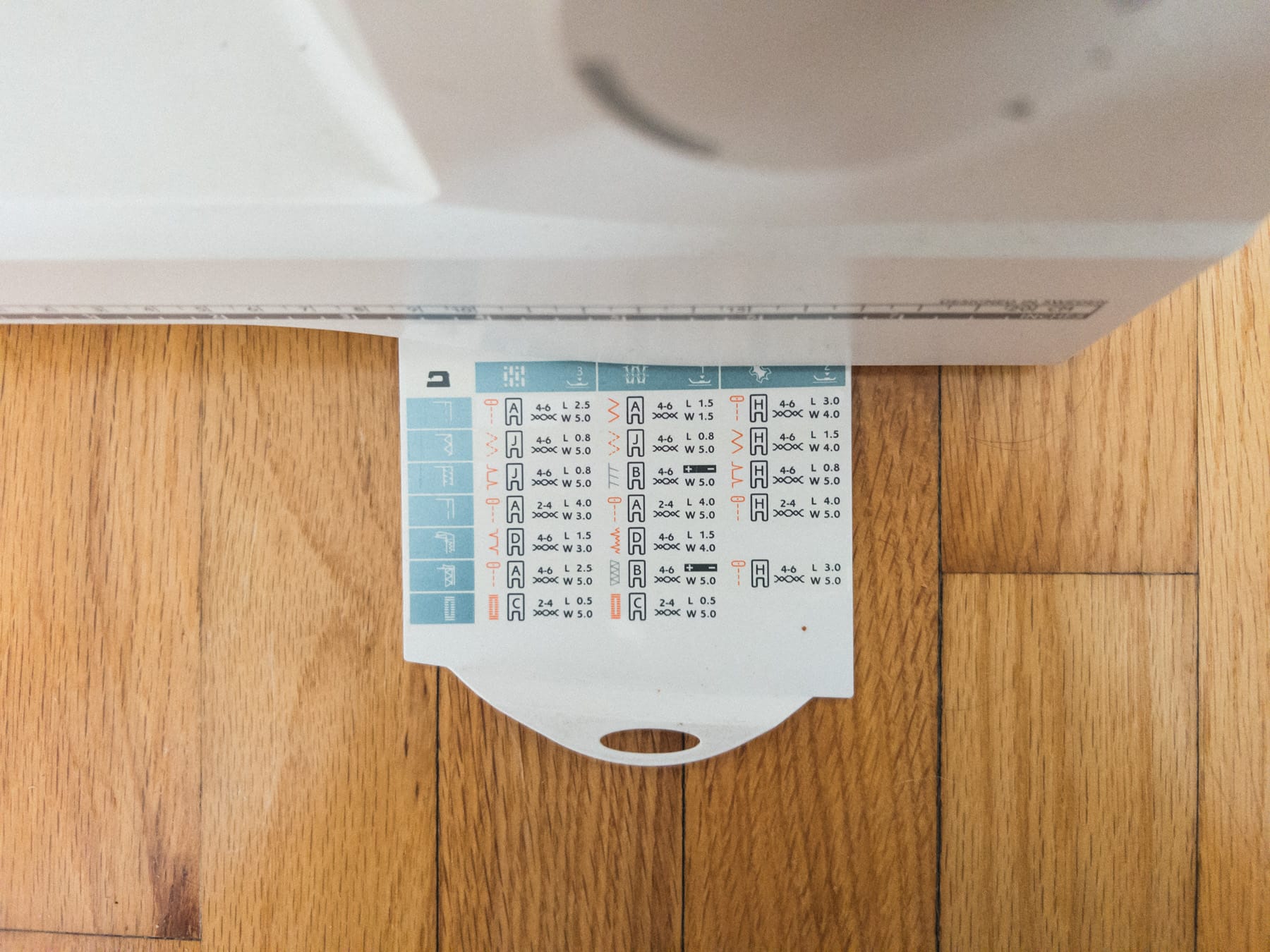Modern sewing machines have a number of knobs and dials that control thread length, thread width, tension, presser-foot pressure, so on. Different fabrics and stitch patterns call for different constellations of settings: Cotton is a baseline but twill wants higher tension and firmer foot pressure. Sheer curtains might need a looser tension and a shorter stitch. Zippers are their own matrix.
Some sewing machines, like the two we have in our house, come with built-in reference charts and memory aides. Julia’s, inherited from her mom, is electronic and programmable:

Mine, inherited from Facebook Marketplace, has a charming plastic card that slides out of a slot:

Last weekend at dinner with a couple of friends, R. mentioned that whenever he uses his machine, he has to mess around with the settings until he finds one that won’t snag the fabric. With enough experience, you might have these memorized, but none of us are there yet (and Julia’s machine is more or less always set for puppet felt). So we all need the reference.
But R’s machine doesn’t have a chart. He remembered seeing one in the manual. My charming slide-out plastic card doesn’t specify fabric either – only stitch type – so I have to look these up every time too. Together we came up with a solution: Cut the chart out of the manual and tape it onto the machine.
This, to me, is a hallmark of an experienced maker: modifying your tools to fit your own way of working.
I’m not saying that to toot my own horn. It’s more an admission of my own inexperience; a few years ago the thought to tape up that chart wouldn’t have even occurred to me (how did it take me this long to realize I could do that?) Consciously modifying your tools requires at minimum two things: The first is that you have to know yourself – or at least your own way of working – well enough to spot a pain point and imagine how to augment a tool to make it more your own.
The second: You’re aware that you can modify your tools. That it’s in your capacity to do so. I don’t know if there’s a single big “aha” moment here for me, more a series of little ahas. When I was a teenager, I’d wrap hockey tape around the stick handle to make the grip more comfortable, but that came more out of imitating my friends or Red Wings players on TV. I’ve replaced missing parts on pruning shears and landscape equipment, and found them standard and interchangeable. But only last year did it occur to me that the parts in a shop machine were themselves machined. A lathe is made using other lathes. (Not only other lathes, but you get the idea.)
Software-wise, it might be the first time you clone an open-source project to add or tweak a feature. And while I don’t remember the exact first time, there was, for sure, a first time that I clicked “View Source” on a webpage, pasted it into a text editor, changed some headline and hit refresh.
This consciousness is important, because the more you develop it, whether in one domain or across many, the more you start seeing every tool differently. You see that they’re all capable of transformation, by your own hands, to fit your own hands (and head, heart, etc.) Some more than others, yes, but all more capable than you might’ve first thought. You see that you do not have to take the world for what it is. That what it is can easily be something else.
Transformation doesn’t have to be huge: a chart stuck on with tape, a few lines of code to something already working well to make it just right.
Small ahas accrete. And makers mod their tools.
